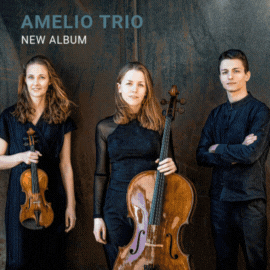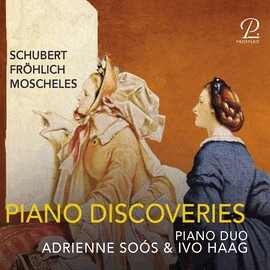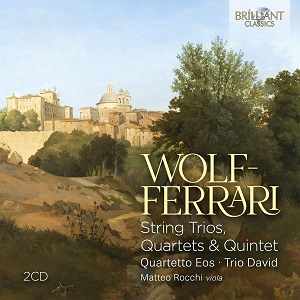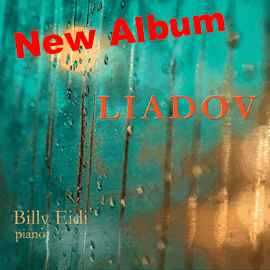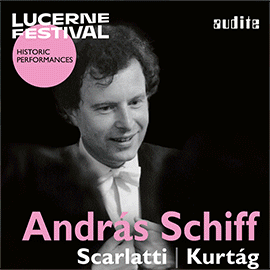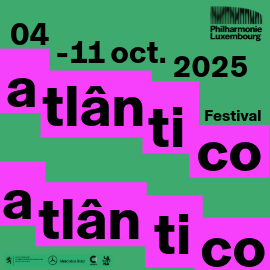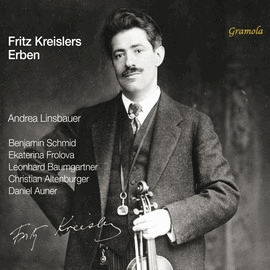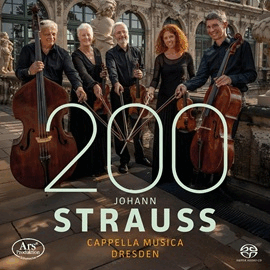Die kompositorische Entwicklung von Wolf-Ferraris lässt sich an dieser Sammlung erkennen. Er kombiniert Virtuosität, Lyrik und Leidenschaft und markiert mit intelligenter harmonischer Sprache und delikater Phrasierung seine Ideen. Daneben zeugen die Werke für Streicher von seiner versierten technischen Kenntnis der Instrumente. Damit kann er jedem in dessen Rahmen gerecht werden, indem er die Grenzen klassischer Spielkultur wahrt. Er nutzt einfach die natürlichen Unterschiede zwischen den Instrumenten, um den Diskurs musikalisch so zu formen, dass er noch in virtuosen und anspruchsvollen Passagen ein für die Interpreten angenehm spielbares Gestaltungsmodell findet.
Das Trio in h-Moll spiegelt die jugendliche Persönlichkeit des Musikers ohne emotionale Tiefe wider. Aus kraftvollen Einsatz von Farben erzeugt er einen originellen Klang. Für das Trio in c-Moll reichen ein dritter und ein vierter Satz, da die ersten beiden bis auf die Tonart mit denen des h-Moll Trios identisch sind. 1945 entstand das a-Moll Trio op. 32, das sich als von intimen inneren Aspekten geprägt darstellt, die sogar eine tief empfundene Angst vor den katastrophalen Auswirkungen des Krieges zeigen mögen.
In der Tradition der Klassik und Romantik steht das Quartett a-Moll aus dem Jahr 1894. Auch das Quartett in e-Moll stammt aus seinen späteren Jahren. Alle einzigartigen künstlerischen Merkmale des Komponisten kommen darin zum Vorschein.
Außer einem Studienwerk liegt als Quintett nur das späte in C-Dur mit zweiter Bratsche vor. Gleich zu Beginn ist eine vielfältig dynamische Situation hörbar, die eine intime und lyrische Atmosphäre schafft, die im letzten Satz in lebhafter und wirkungsvoller Weise ausklingt.
Die Streichtrios werden vom Trio David gespielt. Dieses noch ziemlich am Anfang seiner Entwicklung stehende Ensemble kann die kompositorischen Vorgaben der drei vorgestellten Werke in einer angemessenen Weise umsetzten und so die Gestaltungen der Musik zeigen.
Die Quartette und das Quintett bietet das Quartetto Eos dar, wobei im Quintett Matteo Rocchi als weiterer Bratschist hinzukommt. Dieses schon etwas reifere Ensemble formt die Werke für vier bzw. fünf Mitspieler mit Elan und spielerischem Witz, so dass dieser Teil der Einspielung eine deutlich gestaltungsreichere Widergabe erfährt, die den Hörer sofort einnimmt und damit der Aufnahme den gewünschten Reiz vermittelt. So vermittelt sich die Qualität der sonst wenig beachteten Werke zu ihrem Vorteil.
Wolf-Ferraris’ compositional development can be recognized in this collection. He combines virtuosity, lyricism and passion and marks out his ideas with intelligent harmonic language and delicate phrasing. In addition, the works for strings bear witness to his adept technical knowledge of the instruments. This enables him to do justice to each within its framework by respecting the boundaries of classical playing culture. He simply uses the natural differences between the instruments to shape the discourse musically in such a way that even in virtuosic and demanding passages he finds a model that is pleasant for the performers to play.
The Trio in B minor reflects the musician’s youthful personality without emotional depth. He creates an original sound through the powerful use of color. A third and fourth movement suffice for the Trio in C minor, as the first two are identical to those of the B minor Trio apart from the key. The A minor Trio op. 32 was composed in 1945 and is characterized by intimate inner aspects that may even reveal a deeply felt fear of the catastrophic effects of the war.
The Quartet in A minor from 1894 is in the Classical and Romantic tradition, and the Quartet in E minor also dates from his later years. All of the composer’s unique artistic characteristics come to the fore in it.
Apart from a study work, only the late quintet in C major with second viola is available. Right at the beginning, a varied dynamic situation is audible, creating an intimate and lyrical atmosphere, which ends in a lively and effective manner in the last movement.
The string trios are played by the Trio David. This ensemble, which is still quite at the beginning of its development, is able to realize the compositional requirements of the three works presented in an appropriate manner and thus demonstrate the forms of the music.
The quartets and the quintet are performed by the Quartetto Eos, with Matteo Rocchi joining as an additional violist in the quintet. This somewhat more mature ensemble performs the works for four or five players with verve and playful wit, so that this part of the recording is given a much more creative rendition, which immediately captivates the listener and thus gives the recording the desired appeal. In this way, the quality of the otherwise little-noticed works is conveyed to their advantage.







